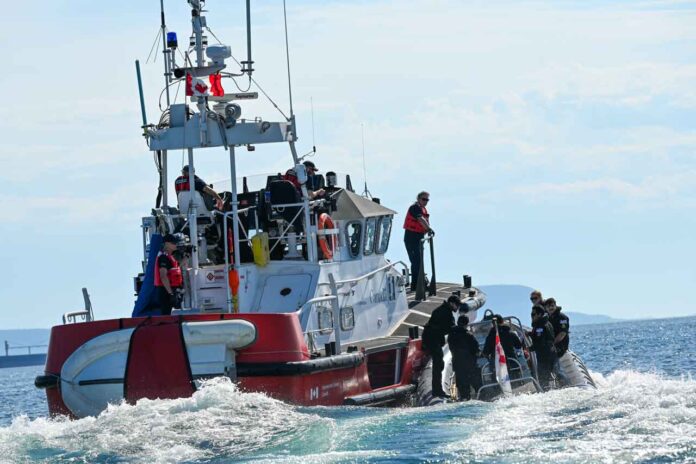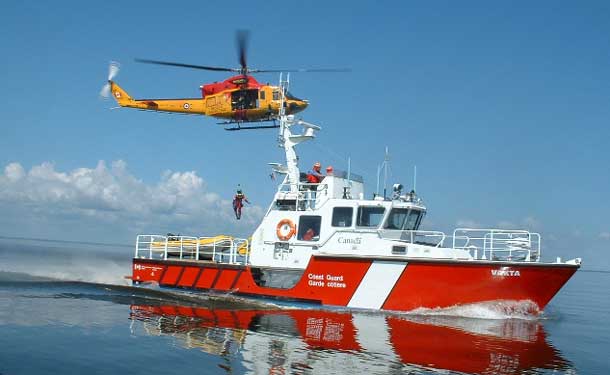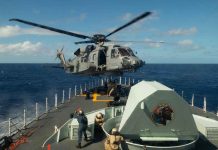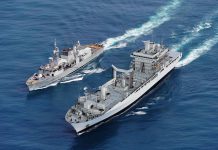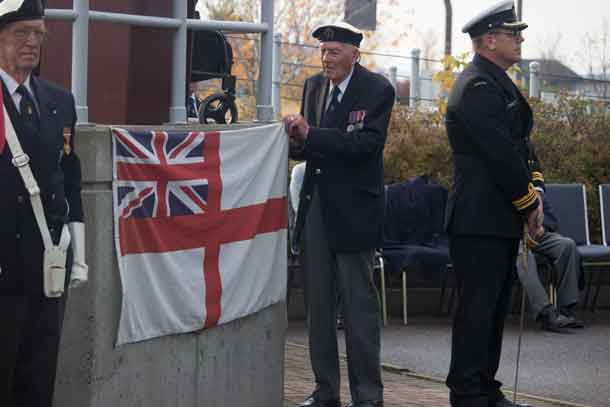Thunder Bay, ON – The shores of Lake Superior once again played host to the Canadian Armed Forces’ annual Exercise Waking Giant this past weekend, cementing the region’s role as a critical training ground for search and rescue, disaster relief, maritime skills and multi-agency collaboration.
From September 21 to 22, approximately 75 naval personnel, alongside the Canadian Coast Guard and the 18 Field Ambulance, conducted intricate maritime training operations and exercises across the waters of Lake Superior.
While this year’s exercise featured a smaller contingent than previous iterations—such as 2023’s 150 participants—it maintained its focus on challenging, real-world scenarios designed to test the readiness of Naval Reserve personnel and support units.
The exercise was staged across several prominent locations, including Thunder Bay Harbour, Alexander Henry Museum Ship, Kaministiquia River, Terry Fox Memorial and Thunder Bay waterfront.
Lieutenant Commander Roger Farn, Commanding Officer of HMCS Griffon, who oversaw the exercise, emphasized the importance of the training in fostering coordination between various branches of the military and civilian agencies. “Exercise Waking Giant brings together diverse skill sets from across the Canadian Armed Forces and partners such as the Coast Guard and 18 Field Ambulance. Each year, we build on past exercises, refining our approach and improving our collective capabilities,” Farn stated.
This year’s training scenarios involved the use of rigid-hull inflatable boats (RHIBs), personal watercraft and Canadian Coast Guard Cutter Cape Chaillon. Sailors, medics, and Coast Guard personnel coordinated their efforts in responding to mock emergencies, such as rescuing persons in the water, finding missing persons or vessels, firefighting and administering first aid to “injured” personnel.
The unforgiving environment of Lake Superior added another layer of difficulty to the operation. As seen in past years, the lake’s unpredictable weather conditions posed real challenges to the participants. High wind conditions on Sunday forced organizers to revise the planned navigation activities and move to a more protected area in the Kaministiquia River. Despite the shift in plans, the teams adapted quickly. “High wind and waves certainly upped the ante for boat handling, but those are the exact challenges we want our teams to face,” explained Lieutenant Joel Biesenthal, HMCS Griffon’s Executive Officer and the officer in charge of running the exercise. “It’s not just about training in the “ideal” conditions. Real emergencies never happen in perfect conditions, so we are lucky to train in an environment that mirrors that unpredictability”. These weather-related adjustments are not new to Exercise Waking Giant. Similar difficulties were encountered in the 2023 exercise, where fog and heavy waves delayed parachute landings, but participants managed to adapt by performing water-based rescues instead. This flexibility and the ability to overcome unforeseen obstacles remain key takeaways from the event.
Thunder Bay’s diverse landscape continues to make it an ideal training ground for these types of exercises. Combining urban environments, vast rural areas, and access to Lake Superior’s expansive waters, the location allows for a wide range of training opportunities, from search and rescue operations to simulated disaster relief. While many naval exercises occur on the coasts, the smaller inland training events such as Waking Giant provide a unique opportunity for personnel to hone skills in command and control, boat handling, and small-unit leadership. For junior officers, the exercise offers valuable experience in managing crews in high-pressure environments. “The scale of these inland exercises allows for more hands-on leadership opportunities for younger officers,” said Farn. “It’s something different from what they often get on larger vessels.”
In addition to refining technical skills and coordination, Waking Giant offers a unique platform for personnel development. New recruits and seasoned veterans alike take part in the exercise, sharing knowledge and honing leadership skills in a dynamic, ever-evolving setting. Among the participants was Acting Sub-Lieutenant Caitlin Roberts, one of the newest members of HMCS Hunter in Windsor, Ontario. Having just completed basic training, Roberts played a critical role in the exercise as a RHIB navigator. Reflecting on the experience, Roberts shared, “What I loved about the waking giant exercise was the teamwork and collaboration involved. We were given the chance to tackle problems as a team and I really valued the opportunity to meet so many new people”. Similar thoughts were also shared by S2 Iqra Syeda, also from HMCS Hunter who when asked what the most valuable part of the exercise was, stated; “The importance of teamwork and communication. Working closely with others to navigate challenges can really highlight how collaboration, enhances, problem-solving skills, and decision-making. I also developed hands-on skills that gave me confidence when it came to communicating on the boats.”
The multi-agency nature of the exercise also fosters collaboration across military branches and civilian organizations. Members of the Canadian Coast Guard, 18 Field Ambulance, a local fire suppression services company and Lakehead Transportation Museum were integral in ensuring the exercise’s success, providing additional resources and expertise. This cross-agency cooperation is seen as vital, particularly in regions like Thunder Bay, where both military and civilian entities can be called upon to respond to emergencies.
With another successful iteration of Exercise Waking Giant complete, planning is already underway for 2025. Organizers aim to introduce new simulation elements, ensuring that the exercise continues to evolve and challenge participants in new ways. Master Sailor Ashton Marlow, HMCS Griffon’s Training Chief and Unit Public Affairs Representative has seen improvement for each of the 4 iterations of Exercise Waking Giant. “Each year we take what we’ve learned and improve,” Marlow said. “We’ve seen great progress over the years, but there’s always room to refine and innovate.”
Thunder Bay’s community has also become an integral part of the exercise. Spectators were encouraged to watch the operations from the Thunder Bay Waterfront with many locals taking advantage of the rare opportunity to see their armed forces in action. The event has become a staple in the community, fostering a deeper connection between the military and local residents.
As Exercise Waking Giant grows in scope and complexity, it continues to serve as a testament to the preparedness of the Royal Canadian Naval Reserve. With its focus on adaptability, maritime skills, interagency collaboration, and leadership development, the exercise remains a cornerstone of military readiness and capability both provincially and nationally.
Written by:
MS Ashton Marlow
Training Chief | Unit Public Affairs Representative
HMCS Griffon

